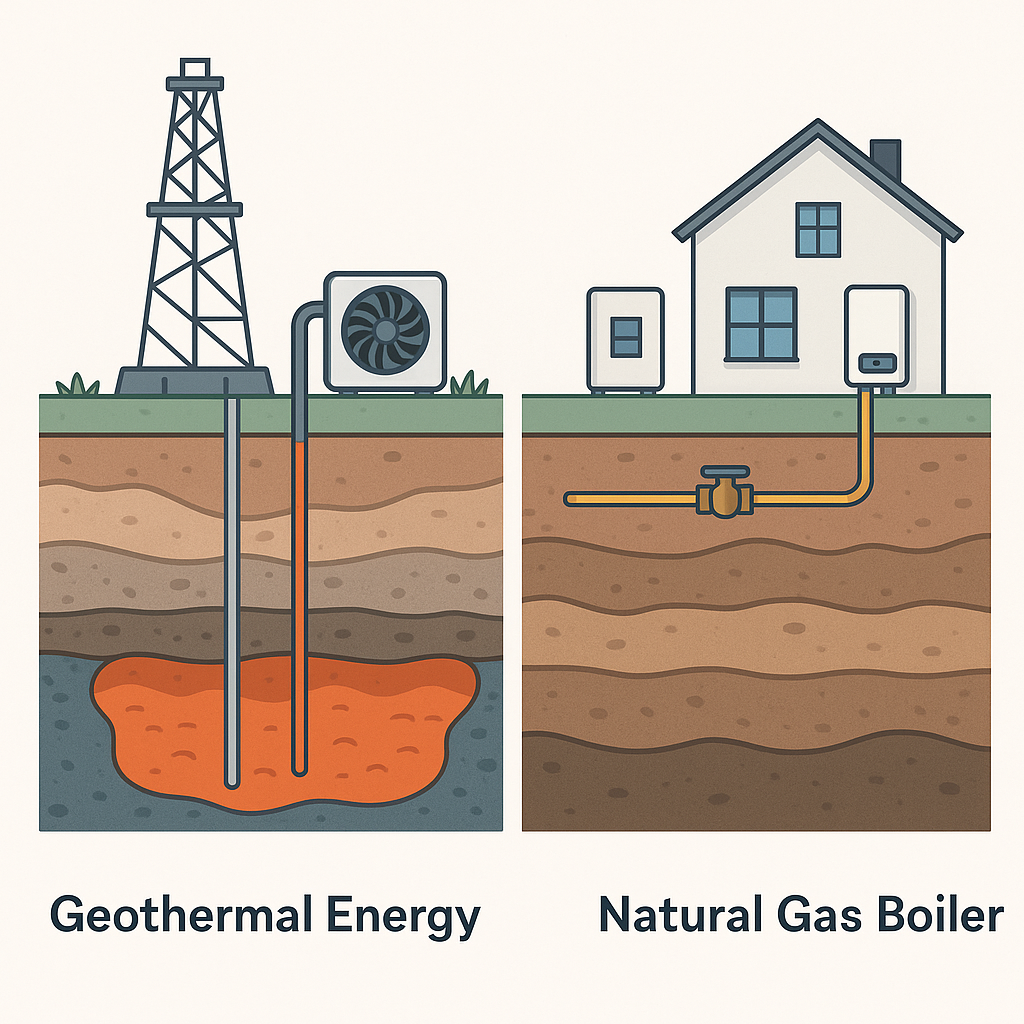In recent years, interest in heat pumps has grown substantially with nearly 300,000 installed across the UK. While the vast majority of these have been air source heat pumps, their ground source counterparts are also becoming more popular with both being low-carbon alternatives.
Ground source heat pumps or GSHPs have a high efficiency or coefficient of performance which means that they generate more heat energy output than the electricity consumed.
Nonetheless, electrical power is needed to run a heat pump system and in this article, we’ll look at how much electricity is needed, how power requirements can vary throughout the year, and the average costs involved.
GSHP Electricity Use And Running Cost Estimates
On average, a ground source heat pump requires around 15 kWh to 20 kWh of electricity per day or approximately 3,000 kWh to 4,000 kWh annually. This means that running costs land around £810 to £1,080 for a mid-sized property.
Notably, a ground source heat pump can practically double the electricity needs of a property. Along with the high upfront costs, this makes for a significant investment that should be carefully weighed up with the pros and cons.
Here is a range of estimates for annual GSHP electricity needs and running costs in the UK:
| Size of Property | Avg. Electricity Needs | Avg. Running Costs |
| Small | 2,000 kWh to 3,000 kWh per year | £540 to £810 |
| Medium | 3,000 kWh to 4,000 kWh per year | £810 to £1,080 |
| Large | 4,000 kWh to 5,000 kWh per year | £1,080 to £1,350 |
Electricity needs and running costs can differ not only based on property size but also on heat pump outputs, household heating requirements, and insulation level variations to consider.
On paper, an average ground source heat pump should require just 10 kWh to 15 kWh of electricity to run per day. However, in practice, factors such as imperfect running conditions mean that GSHPs require about 33% to 50% more electricity than in an ideal situation.
How much electricity a heat pump needs will differ throughout the year. Even if we assume that heating is required for about 200 days per year (late September through April), heating demand peaks in the wintertime.
As a result, the daily electricity needs of a GSHP leans above the average from November through January while tending to be below average when active in the months of September, October, and February through April.
While the amount of electricity needed for a given heat pump will stay approximately the same across its lifetime (and marginally increase due to wear and tear even with the necessary maintenance), the cost of electricity is likely to lower over the years with growing renewables and energy self-reliance.
Other considerations include prices varying by region and time-for-use tariffs. The latter, as the name suggests, refers to differing electricity rates.
How to Save On Heat Pump Running Costs
If having a ground source heat pump installed, you’ll want to consider ways to keep costs down where possible. There are a range of ways to help limit running costs, from necessary steps to medium-cost to more expensive scenarios.
Improved Insulation
Having your home’s insulation upgraded is one notable way to reduce GSHP running costs. This might come in the form of wall insulation, loft insulation, or double- or tripled-glazed windows.
Double-glazing can save around 10-25% on your heating bills whereas triple-glazing could cut costs by around 15-30% altogether.
Of course, along with the cost of having a heat pump installed, you’ll likely want to opt for affordable ways of upgrading your home’s insulation that pay off.
To ensure upgrading insulation helps lower costs you’ll want to consider the dual cost of a GSHP and an insulation upgrade and cost savings in each case and how the numbers work out altogether. If in doubt, it’s best to consult with a professional and/or the local council for guidance on affordability.
Affordable options include insulation for hot water tanksand cavity wall insulation where applicable. In either case, where eligible, government supports can lower the cost of household insulation making it more likely to be a viable investment along with a GSHP installation while lowering running costs over time too.
Underfloor Heating
While not required, underfloor heating can be a good match for a ground source heat pump as an alternative to radiators. Underfloor heating can make for a cosier and more efficient setup, ultimately lowering the cost of running a heat pump.
The price of underfloor heating can vary depending on the size and type of system being fitted, your household energy needs, and any potential governmental support. Costs tend to range from £3,000 to £10,000.
Other Cost-Saving Measures
Along with improved insulation and underfloor heating, it’s important to ensure a heat pump is serviced annually. Along with being essential for operations, safety, and maintenance, having your GSHP serviced will help keep costs down.
Other considerations include using a smart thermostat, having larger radiators installed and solar PV integration to power your ground source heat pump. The latter option could, in fact, allow running a ground source heat pump entirely for free depending on the power, efficiency and scale of the solar setup.
All in all, while ground source heat pumps require a significant amount of electricity to run, between their efficiency, potential to save money over time, and steps taken to lower running costs, GSHPs can be a worthy investment that will help future-proof your home with up-to-date low-carbon heating.


